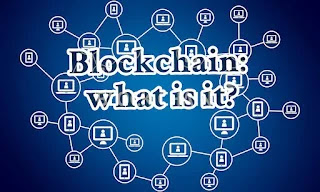Blockchain: what is it?
Ablockchain is a digital ledger of transactions that is duplicated and distributed across the entire network of computer systems on the blockchain. Each block in the chain contains a number of transactions, and every time a new transaction occurs on the blockchain, a record of that transaction is added to every participant's ledger. The decentralized database managed by multiple participants is known as a distributed ledger.
Blockchains are secure by design and are an example of a distributed computing system with high Byzantine fault tolerance. Decentralized consensus has therefore been achieved with a blockchain.
Bitcoin was the first use case and it's still the most popular, but blockchains are now used for a wide range of other applications such as smart contract, supply chain management, and more.
Blockchain: how does it work?
Here is a high-level overview of how a blockchain works:
1. A transaction is initiated by one party and broadcast to the entire network.
2. The transaction is verified by multiple nodes on the network, using algorithms such as "Proof of Work" or "Proof of Stake" to ensure the integrity of the transaction and the history of the ledger.
3. Once a transaction is verified, it is grouped with other transactions in a block.
4. The block, which now contains multiple verified transactions, is added to the existing blockchain, in a linear, chronological order, through the process called mining or forking.
5. Each block has a unique code, called a "hash," that distinguishes it from every other block.
6. Also, the previous block's hash value is included in the current block, which creates a chain of blocks, hence called blockchain.
7. Once a block is added to the blockchain, the information it contains cannot be altered or deleted.
This process ensures the integrity and immutability of the data, while also enabling transparency and decentralization. Because multiple copies of the ledger exist across the network, there is no central point of failure and the network can continue to function even if some of the nodes fail.
It's worth noting that the specifics of how a blockchain operates can vary depending on the particular implementation and the consensus mechanism used.
The blockchain: what are the possible applications?
Blockchains have the potential to be applied in a wide range of industries and use cases, as they provide a secure, transparent, and decentralized way to record and verify transactions. Some of the most notable applications of blockchain technology include:
1. Cryptocurrency: Bitcoin was the first and is still the most popular application of blockchain technology. Other cryptocurrencies, such as Ethereum and Litecoin, have also been built on blockchain technology.
2. Smart Contracts: Blockchain technology allows for the creation of "smart contracts," which are self-executing contracts with the terms of the agreement between buyer and seller being directly written into lines of code.
3. Supply Chain Management: Blockchains can be used to create a permanent, unchangeable record of transactions within a supply chain, which can help to increase transparency and efficiency.
4. Digital Identity: Blockchains can be used to securely store and manage digital identities, allowing individuals to control their personal information and share it only with parties they trust.
5. Digital Voting: Blockchain technology can provide a secure and transparent way to conduct digital voting, which can increase voter turnout and help to prevent electoral fraud.
6. Gaming: Blockchain-based games allow players to own unique digital assets that can be bought, sold, or traded on marketplaces.
7. Medical record: Blockchain-based medical records can improve the security and sharing of patient data between healthcare providers.
8. Banking and Finance: Blockchain technology can be used to securely and transparently record financial transactions, and can also be used to create new financial products such as decentralized exchanges and stablecoins.
9. Internet of Things: Blockchain can be used to secure communication and transactions between IoT devices and manage their interactions with the smart contract.
These are just a few examples, but the potential applications of blockchain technology are constantly evolving and expanding. The technology is still in its early stages, but it has the potential
to revolutionize various industries and change the way we conduct business.
Tags:
TECHNOLOGIE


